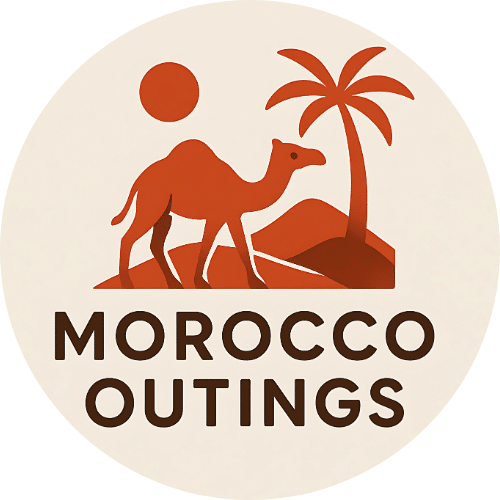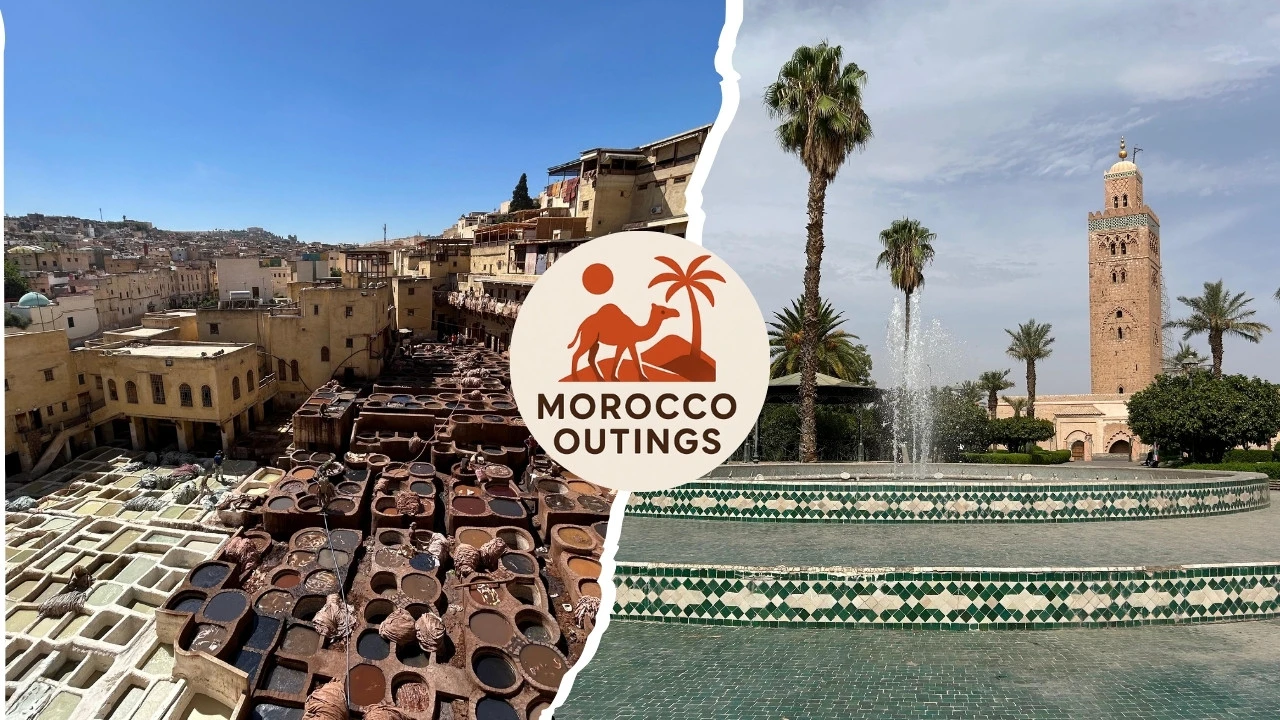How to Plan a 7-Day Trip in Morocco
Morocco is a land of ancient medinas, sweeping deserts, and Atlas peaks, with a cultural tapestry woven from Amazigh, Arab, Andalusian, and French influences. From the lively lanes of Marrakech to the towering dunes of the Sahara, Morocco offers an incredible variety of experiences in a compact area. But how can you fit so much wonder into one week?
If you’re planning a 7-day trip to Morocco, we’ve pulled together an itinerary that showcases the must-sees of this stunning destination. This is only a guide, as this itinerary can feel full for a single week—but that doesn’t mean it isn’t possible with smart pacing and a bit of planning!
At Morocco Outings, we specialise in creative holidays with a literary twist. Ideal for culture lovers on holiday, our tours look at Morocco’s cities, kasbahs, and desert outposts through a storytelling lens, referencing great writing from Paul Bowles to Leïla Slimani—and a dash of Agatha Christie for good measure.
We also offer custom tours across Morocco and, for writers, a 7-day creative retreat in the High Atlas. As locals living in Marrakech, we love sharing our home with travellers from around the world. Get in touch and we’ll begin curating your dream holiday today.
Day 1: Explore Marrakech
Arrive in Marrakech and check into your riad tucked inside the old city walls. Depending on your energy levels, you can rest a while before you begin your adventure. A low-key activity is to meander through the medina’s lanes, pausing for mint tea on a rooftop as the call to prayer rolls over the terracotta skyline.
For a gentle dive into history and design, consider a guided visit to the Bahia Palace with its painted cedar ceilings, or the restored Ben Youssef Madrasa, famed for its zellige tilework. In the evening, wander Jemaa el-Fnaa to sample fresh squeezes of orange juice, smoky brochettes, and the spectacle of Marrakech at dusk.
The new city (Gueliz) offers contemporary galleries and cafés if you prefer a quieter start. You can also visit the Jardin Majorelle and the Yves Saint Laurent Museum—just remember to book timed entry in advance if you’re traveling in peak seasons.
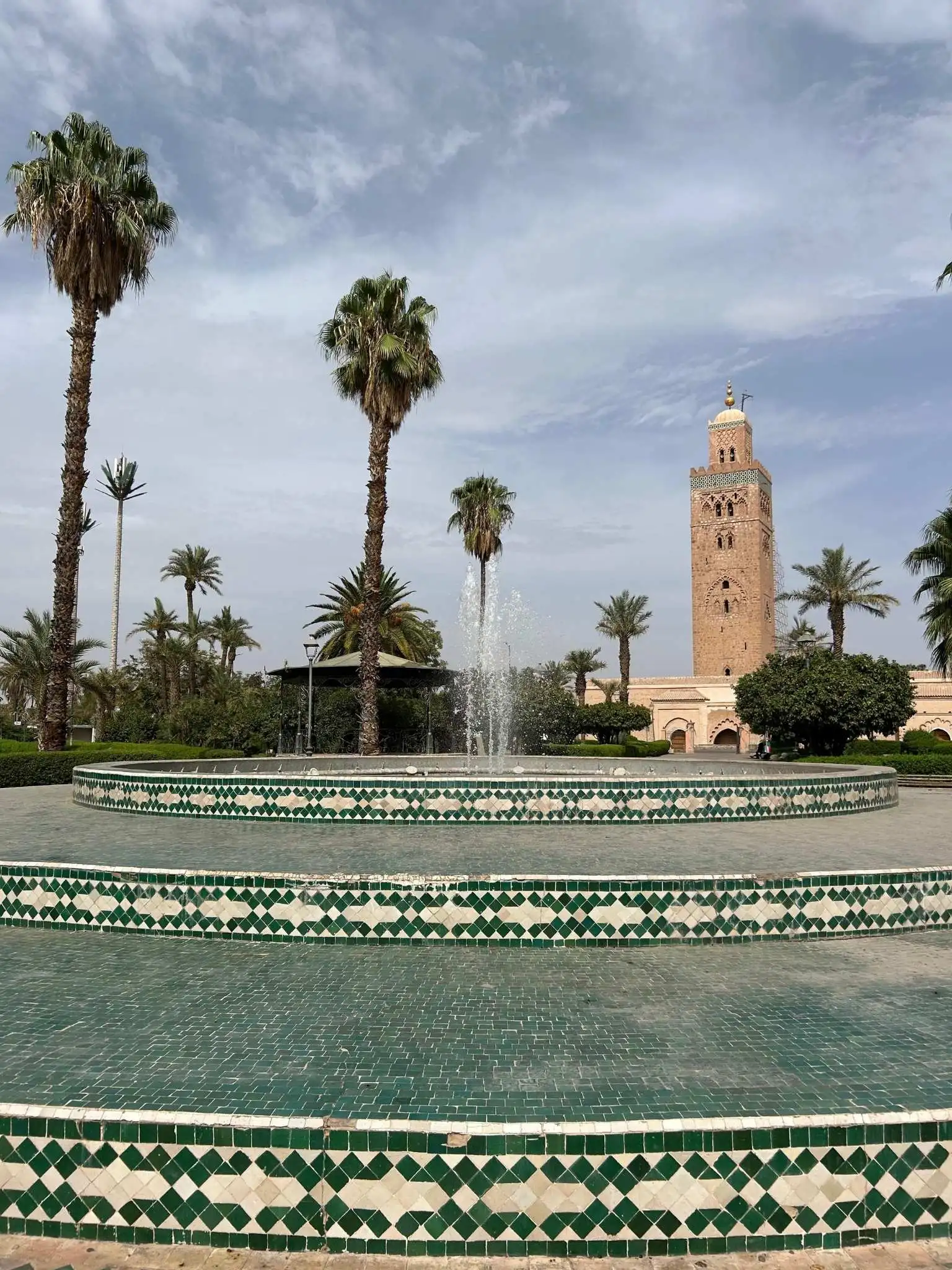
Day 2: Gorges & Kasbahs via the High Atlas
After you have slept off the jet lag, set out across the High Atlas via the Tizi n’Tichka pass. It’s a dramatic drive with hairpin bends and sweeping vistas, so plan scenic stops. Midway, tour the UNESCO-listed ksar of Aït Ben Haddou, whose earthen towers and alleys evoke centuries of trans-Saharan trade and have inspired countless films.
By afternoon, continue through the Valley of a Thousand Kasbahs. Choose to stay in Skoura, an oasis of date palms where crumbling mud-brick fortresses peek from the groves, or press on to the Dades Valley, known for rose fields and striated rock canyons.
Spend the evening in a kasbah guesthouse. Enjoy a home-cooked tagine and, if skies are clear, step outside to stargaze—there’s far less light pollution than in the cities.
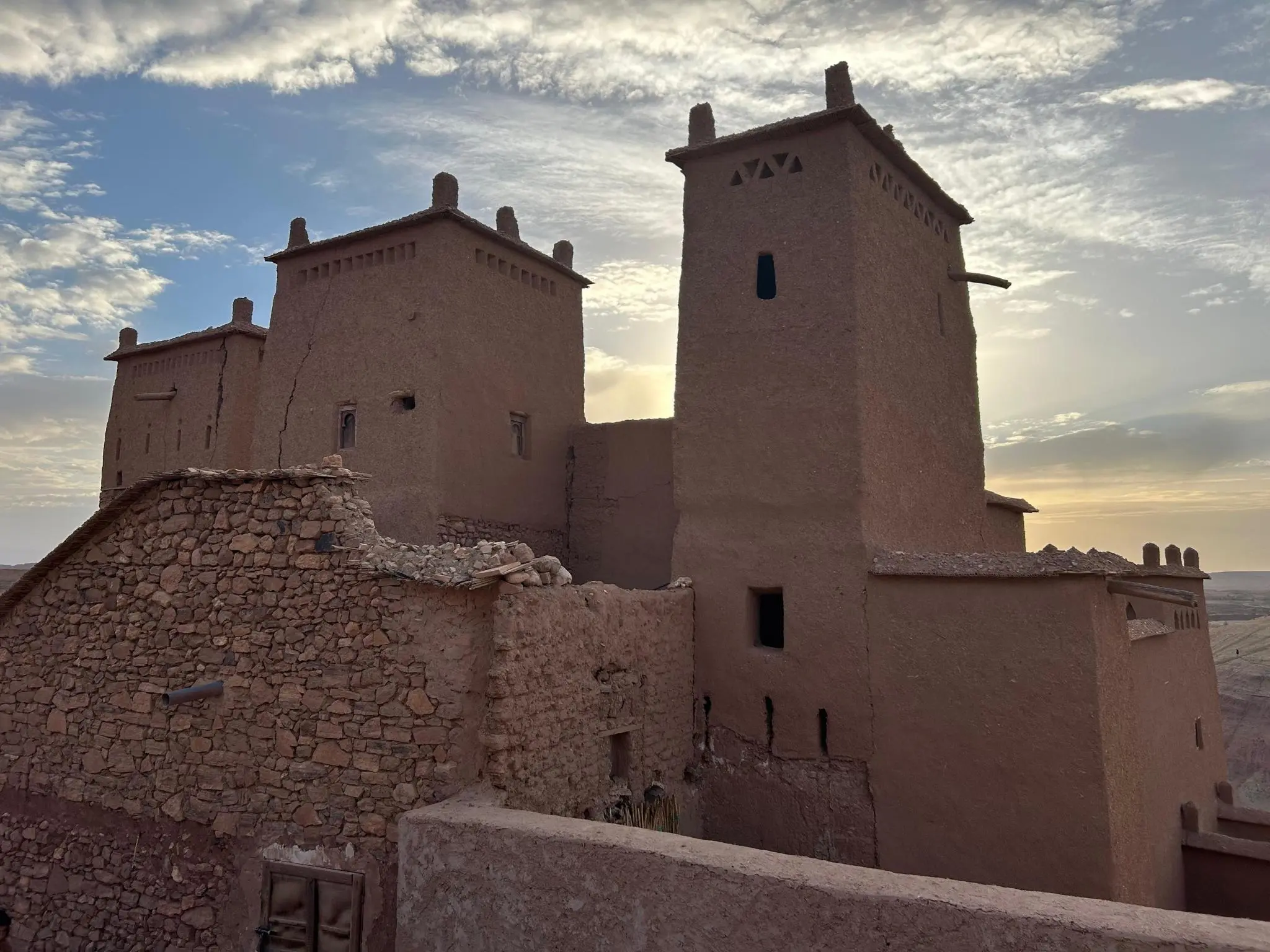
Day 3: Into the Sahara—Merzouga & Erg Chebbi
Today you’ll travel to Merzouga on the edge of the Erg Chebbi dunes. The landscape shifts from oasis towns to open desert plains, with chances to stop at the Todra Gorge or small fossil workshops near Erfoud. Aim to reach Merzouga by mid-afternoon.
Swap your luggage for an overnight bag and set off by camel ride or 4×4 into the dunes. Sunset paints the sands gold and apricot; after a Berber dinner in camp, music and stories circle the fire. Fall asleep beneath a sky crowded with stars in a tent outfitted with cozy bedding and, often, ensuite comforts.
Wakefulness comes easy in the desert—many guests rise again before dawn to listen to the silence. If you’re an early bird, a short climb up a dune rewards you with a sunrise you won’t soon forget.
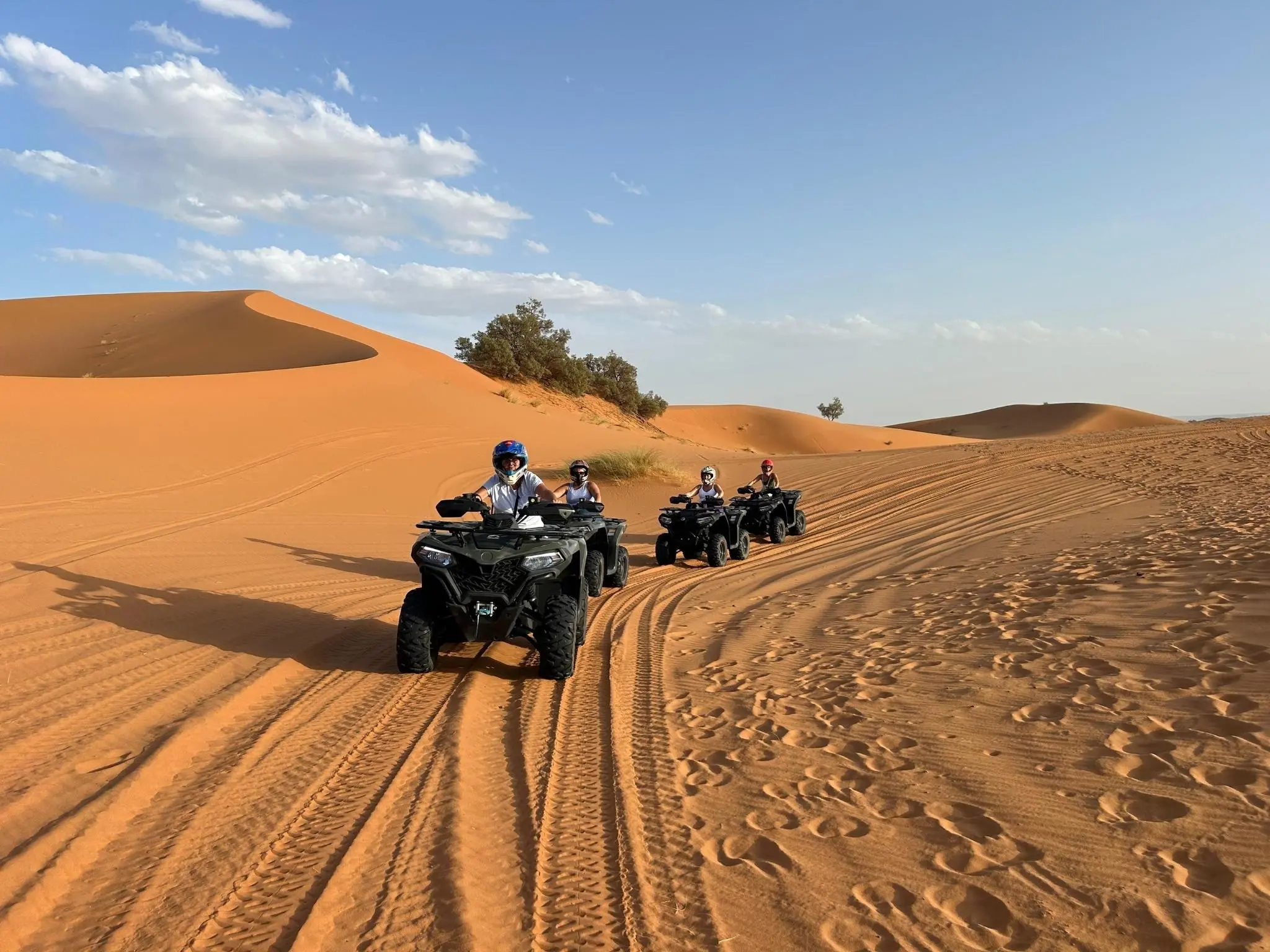
Day 4: The Long, Scenic Road to Fes
After breakfast back at the edge of the dunes, begin the long but beautiful journey north toward Fes. You’ll trace the green ribbon of the Ziz Valley, where palm groves and mud villages fill the canyon floor, then climb into cedar forests of the Middle Atlas. Keep an eye out for Barbary macaques near Azrou.
Breaks for lunch and views are essential today; a driver-guide makes the day smoother and lets you enjoy the scenery. By evening, you’ll arrive in Fes and check into a riad within the labyrinthine medina, ready to explore Morocco’s cultural capital.
Consider a low-key dinner inside the medina tonight—you’ll have a full day of sightseeing tomorrow.
Day 5: Fes—Labyrinths, Crafts & History
Spend today discovering Fes el-Bali, a UNESCO-listed marvel of over 9,000 alleys and lanes. A guided walk helps you navigate the quarters of carpenters, coppersmiths, and dyers, and brings context to historic sites such as the Al-Qarawiyyin (often cited as the world’s oldest university) and the exquisite Attarine Medersa.
The Chouara Tannery—with its honeycomb of dye vats—offers a vivid look at centuries-old leather-making traditions; visit a terrace for the best vantage. Pause for a traditional lunch of pastilla or a fragrant vegetable tagine, then delve into antique shops and ceramics ateliers to meet artisans keeping Fassi crafts alive.
By late afternoon, slip to a hillside viewpoint above the Marinid Tombs for a golden-hour panorama of the city before dinner.
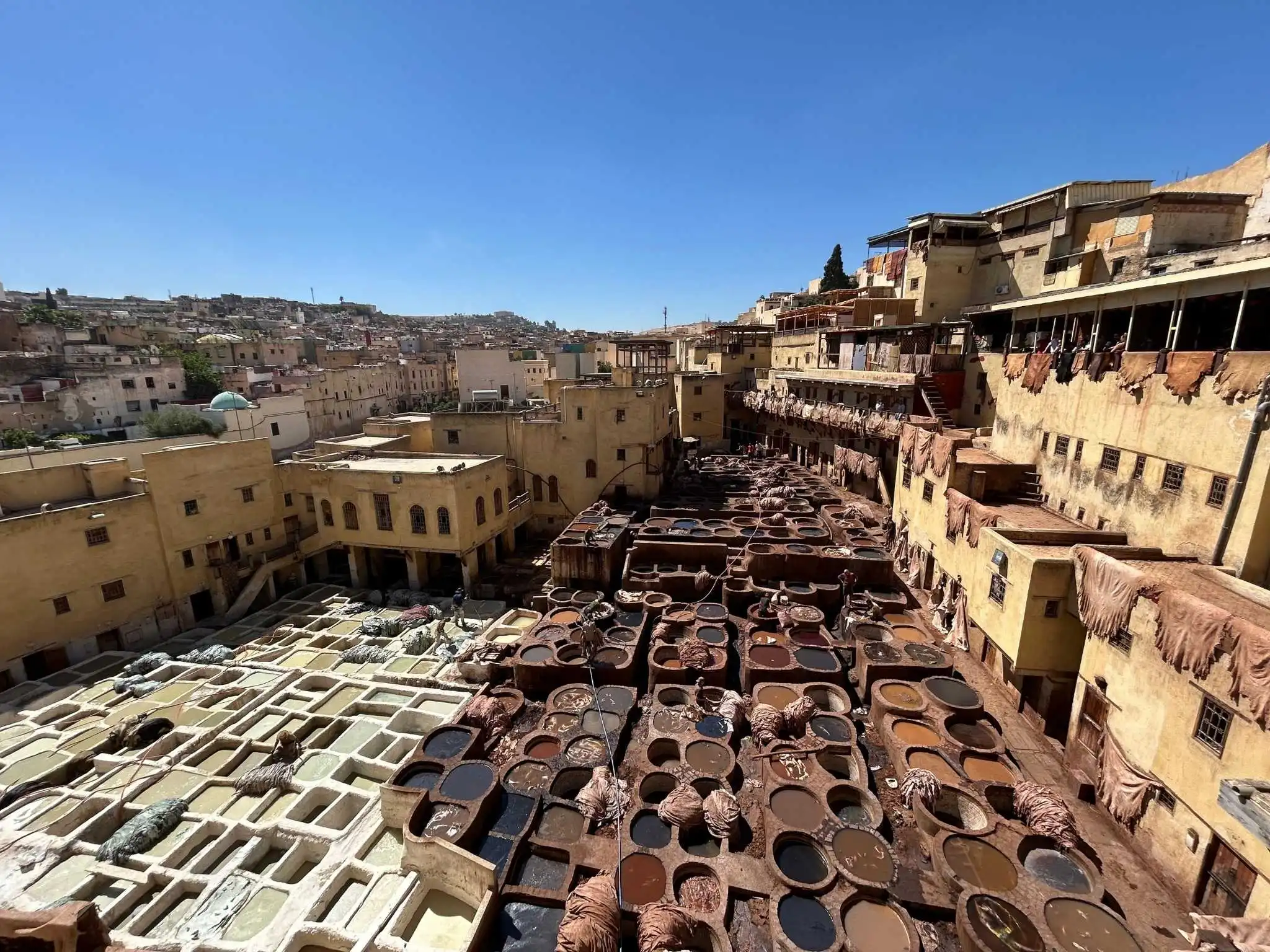
Day 6: Chefchaouen or Meknes & Volubilis
After days of cities and desert, you have two excellent day-trip options. One is to head north to Chefchaouen, the famed “Blue Pearl” nested in the Rif Mountains. Wander its indigo-washed lanes, climb to the Spanish Mosque for sweeping views, and enjoy a slower pace of life with café stops and photo strolls.
Alternatively, steer west to Meknes, an imperial city with monumental gates and granaries, pairing it with Volubilis, North Africa’s best-preserved Roman site, where mosaics shimmer in the North Moroccan light. A licensed guide at Volubilis can bring the ruins to life and tailor which villas to prioritize.
Either option makes for a full day, so plan an early start. If you’re feeling energetic, you can add a brief stop in the holy town of Moulay Idriss on the Volubilis route.
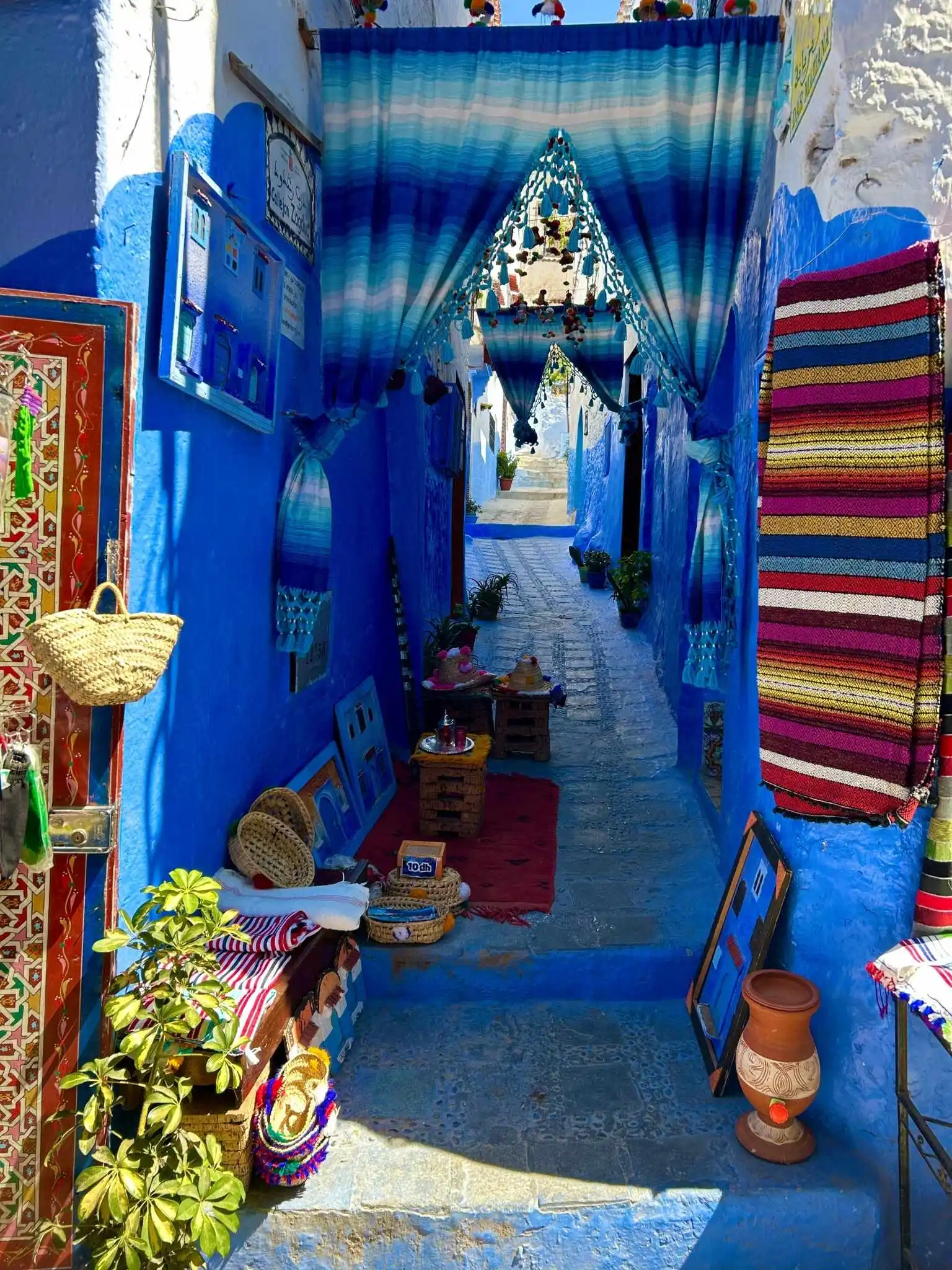
Day 7: Return or Route to Departure City
For the final day of your 7-day trip, fly out of Fes if schedules align, or take the ONCF train to Rabat or Casablanca for more flight options. If time allows in Casablanca, consider visiting the Hassan II Mosque, dramatically set over the Atlantic, for a guided tour.
Alternatively, if you loop back to Marrakech by train or flight, enjoy a last hammam and a leisurely lunch before souvenir shopping—argan oil, woven rugs, spices, and hand-painted ceramics make memorable keepsakes.
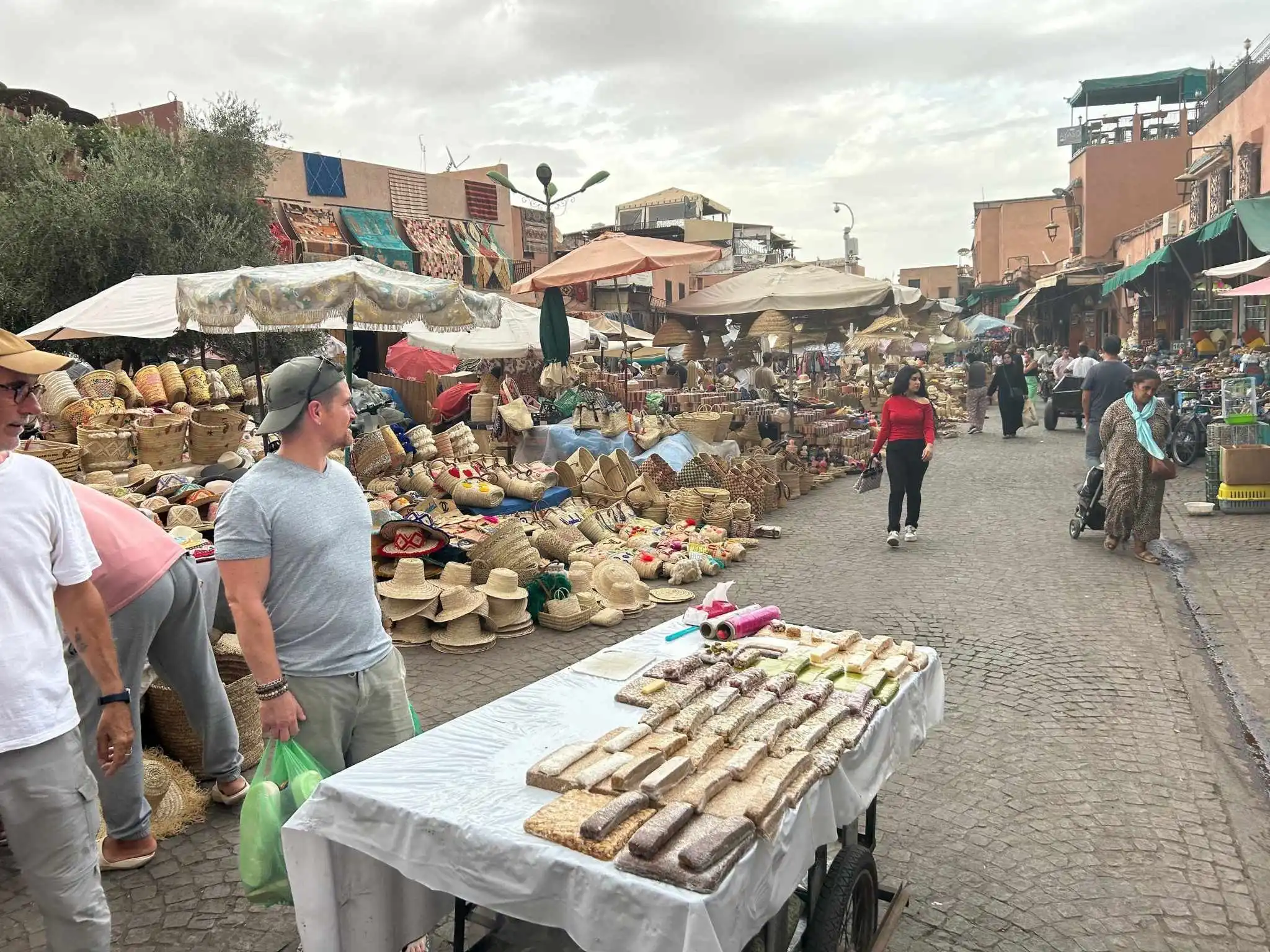
Planning a 7-Day Trip to Morocco
Planning a 7-day trip to Morocco can be an incredible experience, but it’s important to plan ahead to make the most of your time. Distances may look short on a map, yet mountain passes and scenic stops slow travel—in a good way. Breaking up the desert drive with an overnight in Skoura or the Dades Valley keeps the pace humane.
Use this itinerary as a loose guide to experience Morocco’s most iconic landscapes and historic sites. Book your accommodations, desert camp, and key museum entries in advance, and consider hiring a local driver-guide or joining a curated small-group tour to simplify logistics and deepen cultural insights. With careful planning and a sense of adventure, your Moroccan week will be unforgettable.
Whether you’re staying for one week or more, we hope this guide helps you navigate Morocco’s natural beauty and architectural treasures. Just get in touch with us to start planning your holiday and bring your Moroccan dreams to life.
